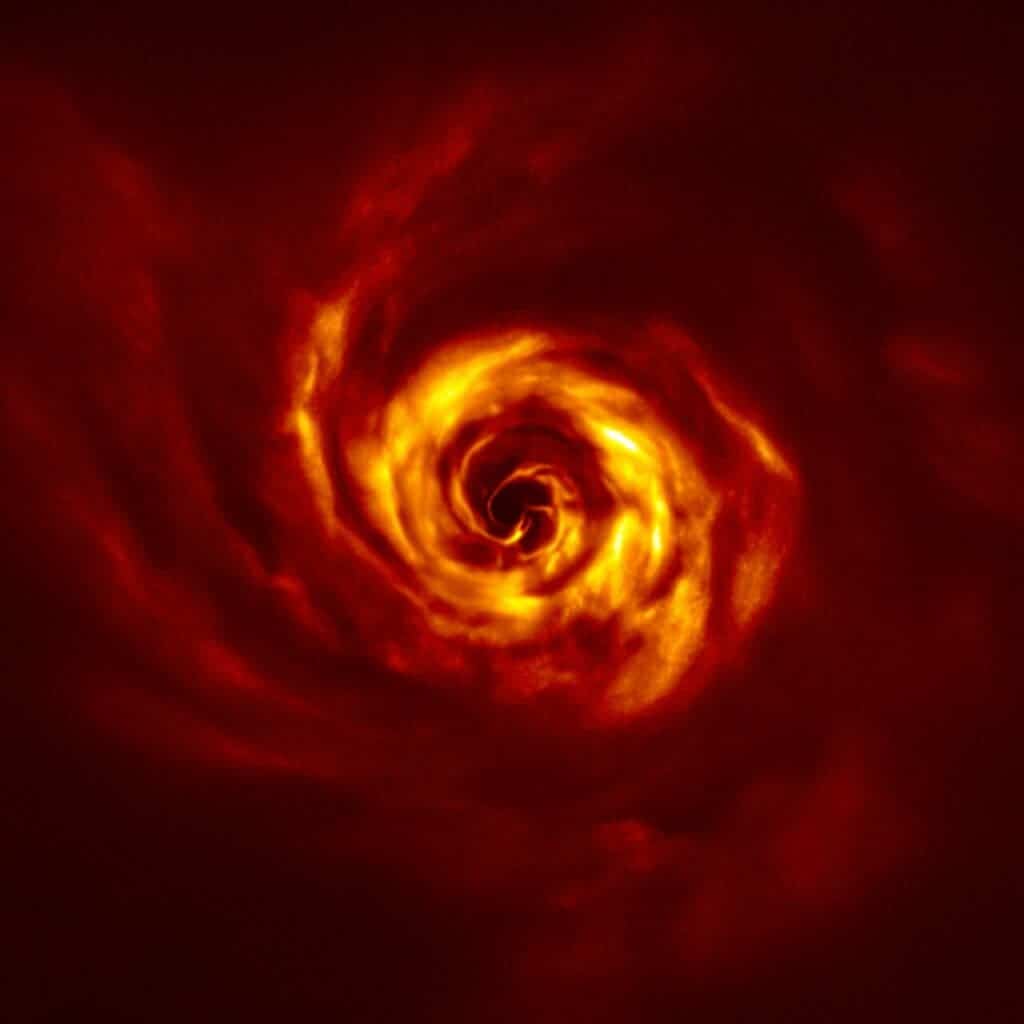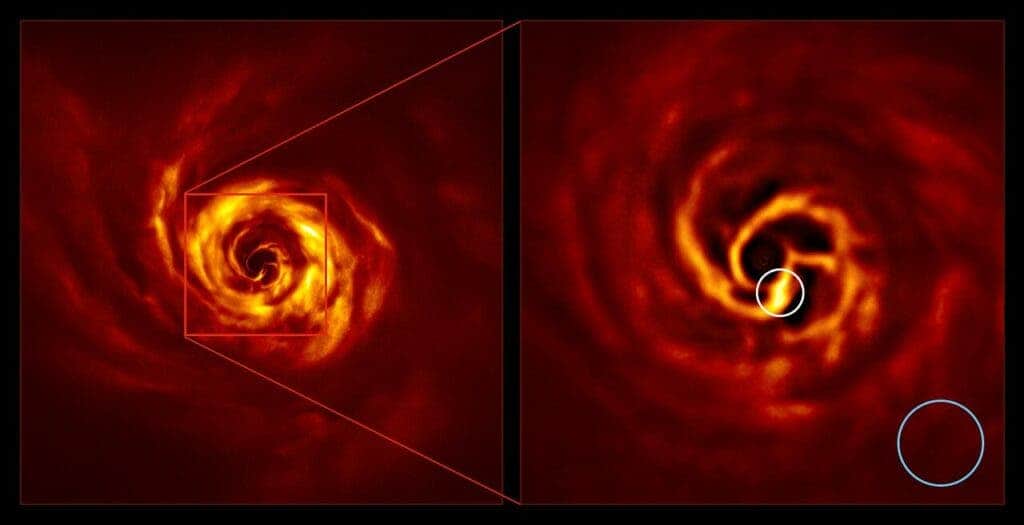
An international team of researchers affiliated with the European Southern Observatory (ESO) have come across telltale signs of a planet being born right before our eyes. The findings could shed light on how planets outside the solar system come into existence.
A giant baby planet
Planets are formed from cold gaseous dusty disks called protoplanetary disks around young stars. Dust particles clump together to form Earth-like planets or to become the cores of more massive planets — but there is still much we don’t know about these precious early moments in the life of a new planet.
This is why these recent observations of a stunning spiral of dust and gas surrounding AB Aurigae — a young star system located 520 light-years away from Earth in the constellation of Auriga — are so important.
Anthony Boccaletti, an astronomer with the Laboratory for Space Science and Astrophysical Instrumentation (LESIA) and the Observatoire de Paris, had led previous observations of AB Aurigae using the ALMA submillimetric interferometer in Chile. These initial observations performed a couple of years ago showed two spirals made of gas close to the star with a hint of a protoplanet.
“Spirals usually point to the presence of a massive object perturbing the gas and producing the spiral as a result of a wave density. This is where we decided to collaborate all together to complement ALMA observations, in order to try to uncover this protoplanet and also to observe the disk in a different regime as long as near-infrared is more sensitive to dust particles,” Boccaletti told ZME Science.
For their new study, Boccaletti and colleagues from France, Taiwan, Belgium, and the US turned to the SPHERE instrument on ESO’s Very Large Telescope (VLT) in Chile to gain a clearer picture of the star and its protoplanetary disk.
SPHERE can detect even the faintest light glowing from small dust particles. The observations confirmed the presence of spiral arms around AB Aurigae and additionally revealed a ‘twist’ that marks the spot where a baby planet is about to come into existence.

“In fact, this star is really bright and the disk also, so it is not particularly challenging for SPHERE as long as the atmospheric conditions are good. And we asked on purpose for very good conditions. It is, in fact, curious that none observed this system in the first 5 years of SPHERE operations! it is really the type of system we call the low-hanging fruit!” Boccaletti said.
“SPHERE detects the emission from tiny dust grains (micrometric grains), which can assemble and coagulate in disks to form large grains, and then eventually the building blocks of rocky planets,” Emmanuel Di Folco of the Astrophysics Laboratory of Bordeaux (LAB), France, told me in an email.
The ‘twist’ had previously popped up in theoretical simulations of planetary formation, corresponding to the connection of two spirals — one winding inwards from the planet’s orbit, the other expanding outwards — that join at the point where the baby planet orbits the young star. This structure allows gas and dust from the disc to clump together, contributing to the growth of the proto-planet.
“Obviously when we realized that one of the spirals has a twist which does match so well the model of the spiral it was very exciting, and we worked hard in a few months to shape the paper as fast as possible to announce this discovery,” Boccaletti said.
“The new image displays two large spirals that are very similar. This is one of the very few young stellar systems where the two instruments provide such a high level of complementarity. The gain in spatial resolution with SPHERE allowed us to solve one puzzling question: what is the origin of the strange shape of the « head » of the southern spiral? One amazing result is that the twist was discovered very close to the site where we had predicted the putative protoplanet to be,” Di Folco said.
According to the researchers, this baby planet will likely grow into a gas giant, perhaps the size of Jupiter or Saturn. In the future, the authors would like to estimate the mass of the planet and search for emissions from its planetary disk in order to investigate how fresh material is added and how it contributes to the growth of the ‘baby planet’.
Astronomers will be able to capture even clearer observations of such proto planets once ESO finishes the construction of its upcoming 39-metre Extremely Large Telescope, which is expected to come online in 2026-2028.
“In addition, more young planets may be currently forming around this star, and we have found hints for other possible planetary bodies around it. This young system, therefore, offers a great opportunity to see a multi-planet system in the making!” Di Falco concluded.
“These kinds of observations of very young systems are a way to understand the very first moment of the formation of a planet. Among the 4,000 planets that we know, the vast majority are old, so we don’t really know how they formed. But catching a planet while it forms is essential if we want to understand this process,” Boccaletti added.
The findings appeared in the journal Astronomy & Astrophysics.



